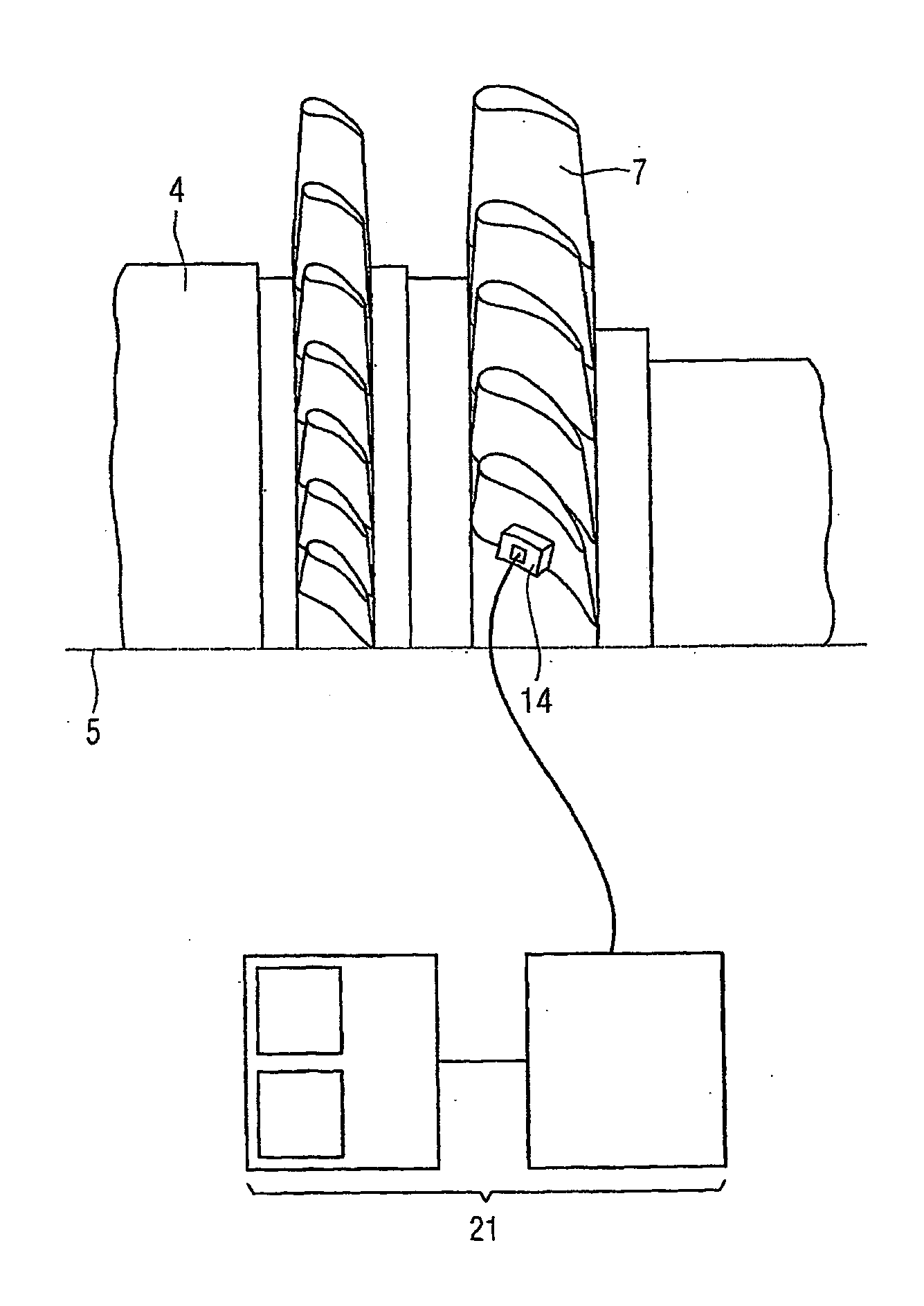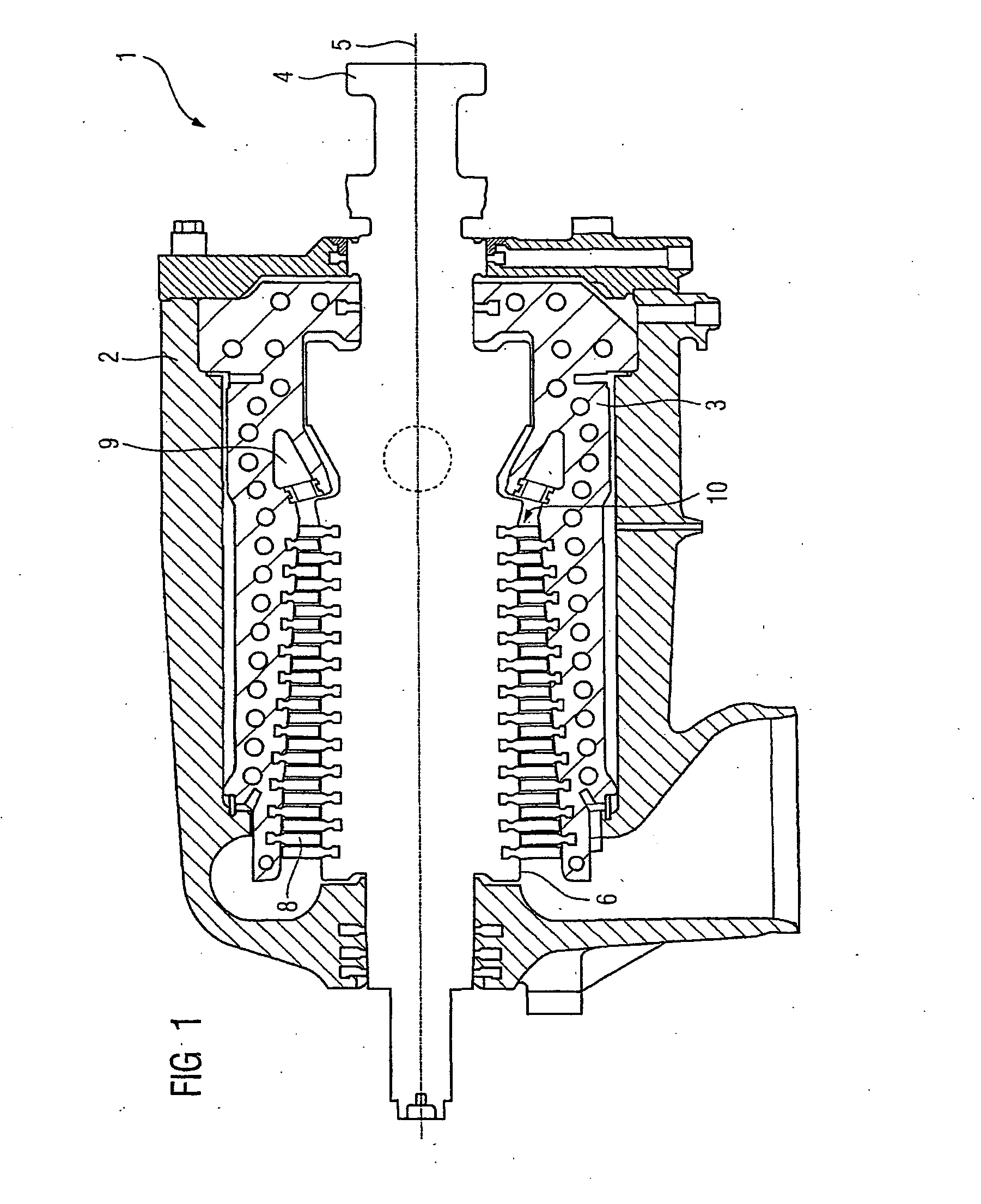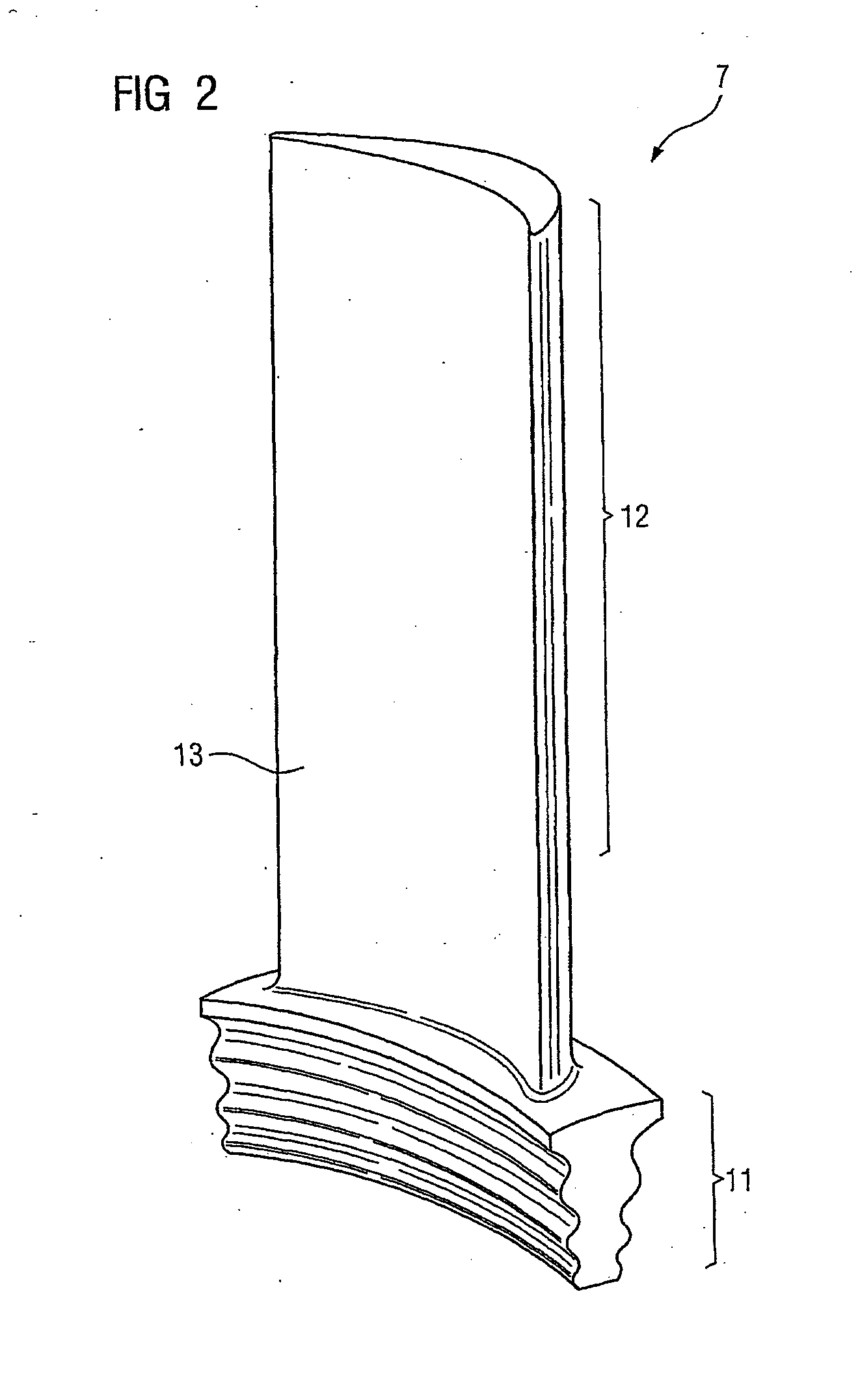Method and Device for Determining Defects in a Turbine Blade
a technology of turbine blades and defects, applied in the field of methods, can solve the problems of inability to investigate the roots affecting the reliability of components, and affecting the strength of components, so as to achieve reliable and fast results, no time-consuming and thus costly dismantling and installation of turbine blades, and the effect of determining the defects of turbine blades in the installed sta
- Summary
- Abstract
- Description
- Claims
- Application Information
AI Technical Summary
Benefits of technology
Problems solved by technology
Method used
Image
Examples
Embodiment Construction
[0048]FIG. 1 shows a section through a steam turbine 1. The steam turbine 1 has an outer casing 2 and an inner casing 3. A shaft 4 is supported rotatably about an axis of rotation 5. On the shaft surface 6, turbine blades 7 are arranged in the circumferential direction. In the inner casing 3, turbine guide blades 8 are arranged. In operation, steam flows into an admission area 9 and expands when passing through a flow duct 10. During this process, a rotation is imparted to the shaft 4. As a result, a rotor, not shown in greater detail, of a generator can be placed into rotation.
[0049]In inspection cases or in cases of damage, the outer casing 2 of the steam turbine 1 is opened, as a rule, to provide access to the individual turbine blades 7 on the shaft 4.
[0050]FIG. 2 shows a perspective view of a turbine blade 7. The turbine blade 7 has a turbine blade root 11. The turbine blade root 11 shown in FIG. 2 is constructed as so-called Christmas tree root. When the steam turbine 1 is ope...
PUM
 Login to View More
Login to View More Abstract
Description
Claims
Application Information
 Login to View More
Login to View More - R&D
- Intellectual Property
- Life Sciences
- Materials
- Tech Scout
- Unparalleled Data Quality
- Higher Quality Content
- 60% Fewer Hallucinations
Browse by: Latest US Patents, China's latest patents, Technical Efficacy Thesaurus, Application Domain, Technology Topic, Popular Technical Reports.
© 2025 PatSnap. All rights reserved.Legal|Privacy policy|Modern Slavery Act Transparency Statement|Sitemap|About US| Contact US: help@patsnap.com



